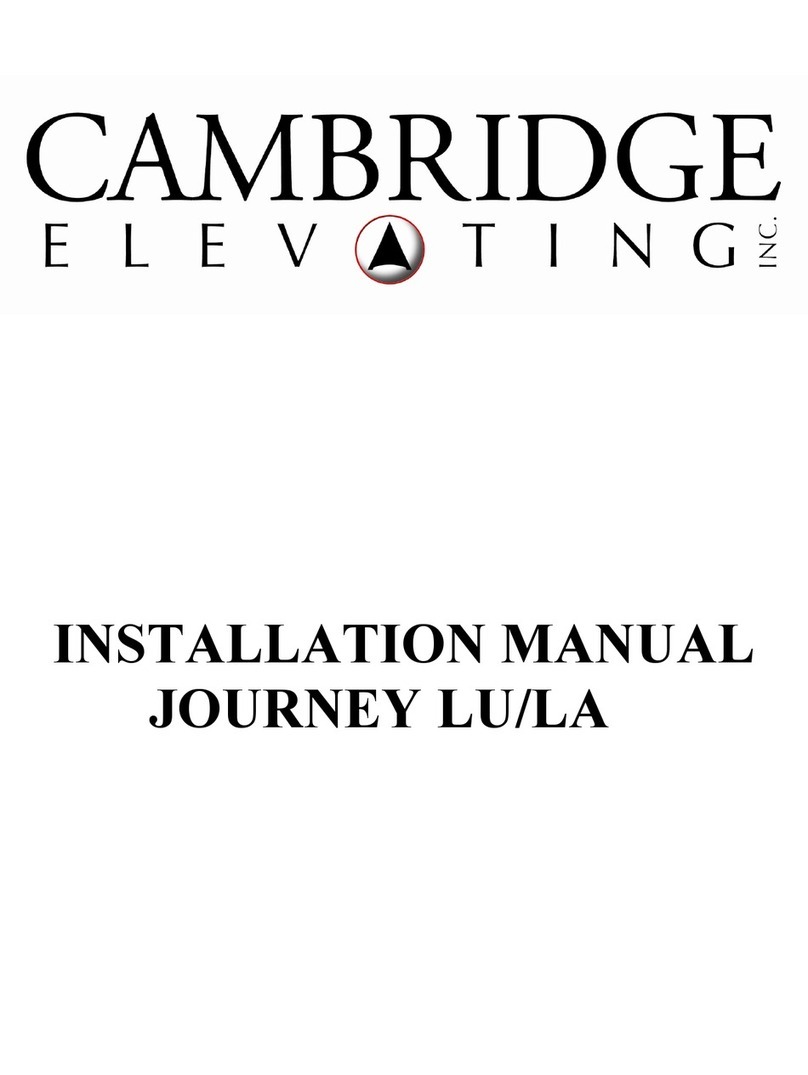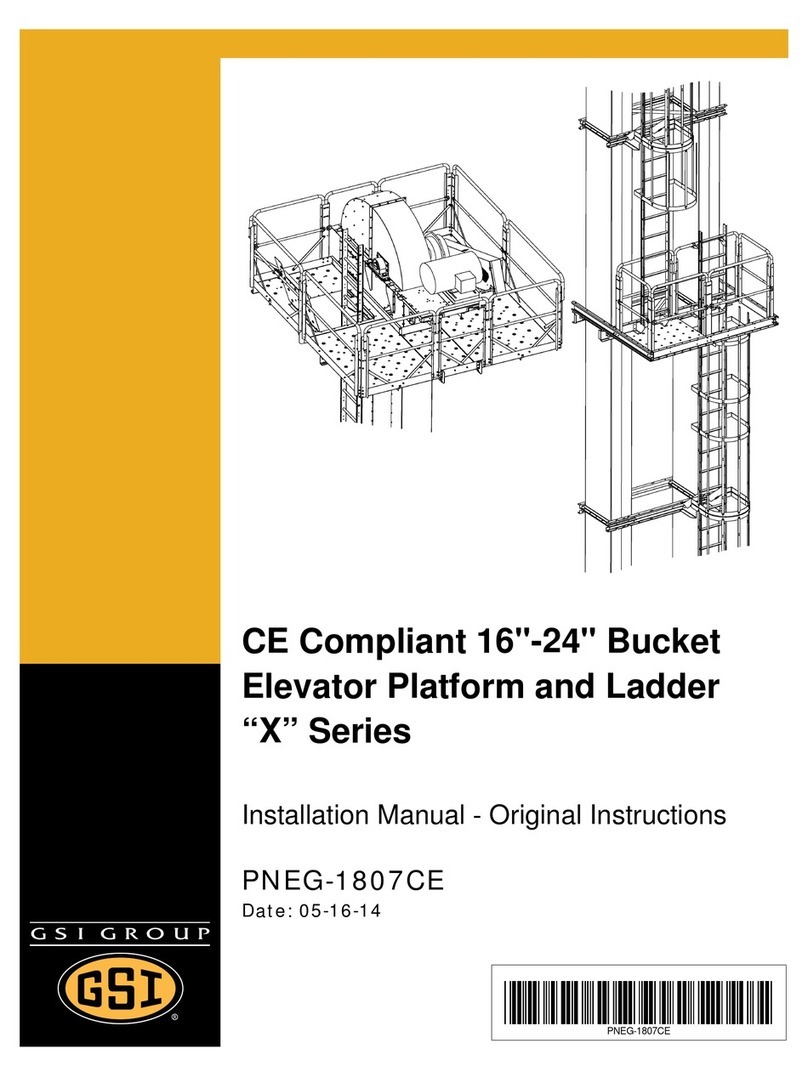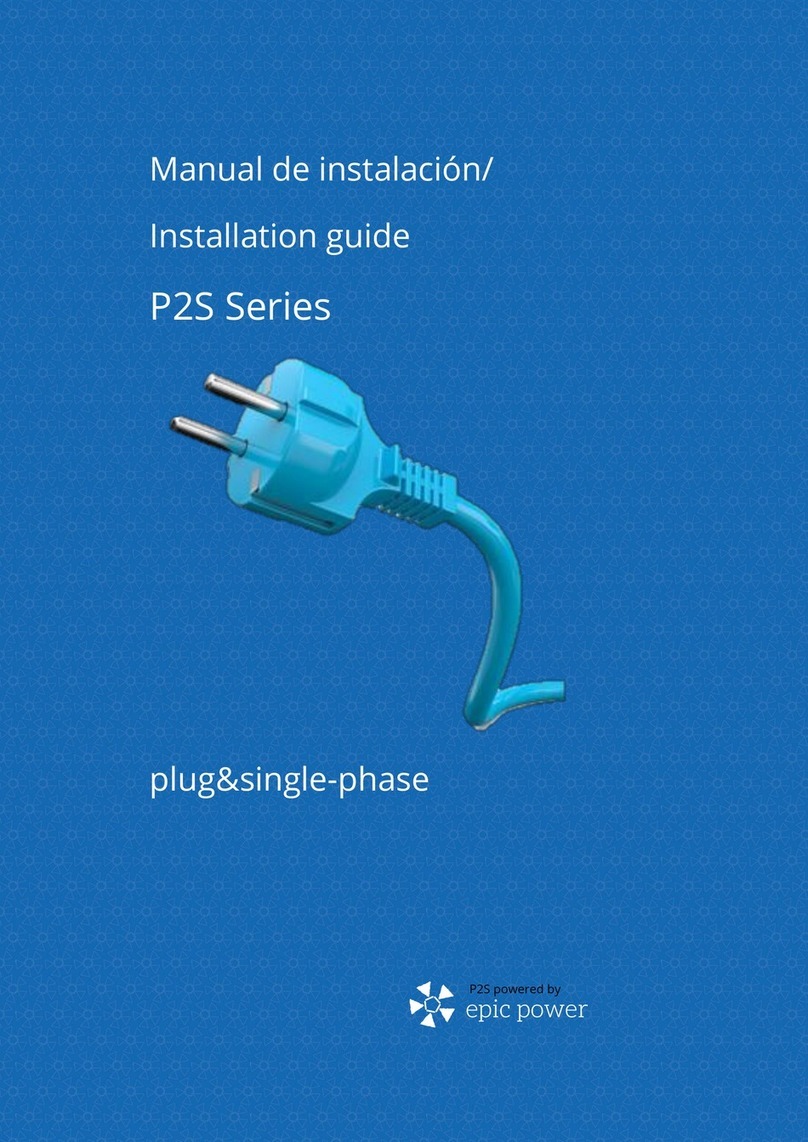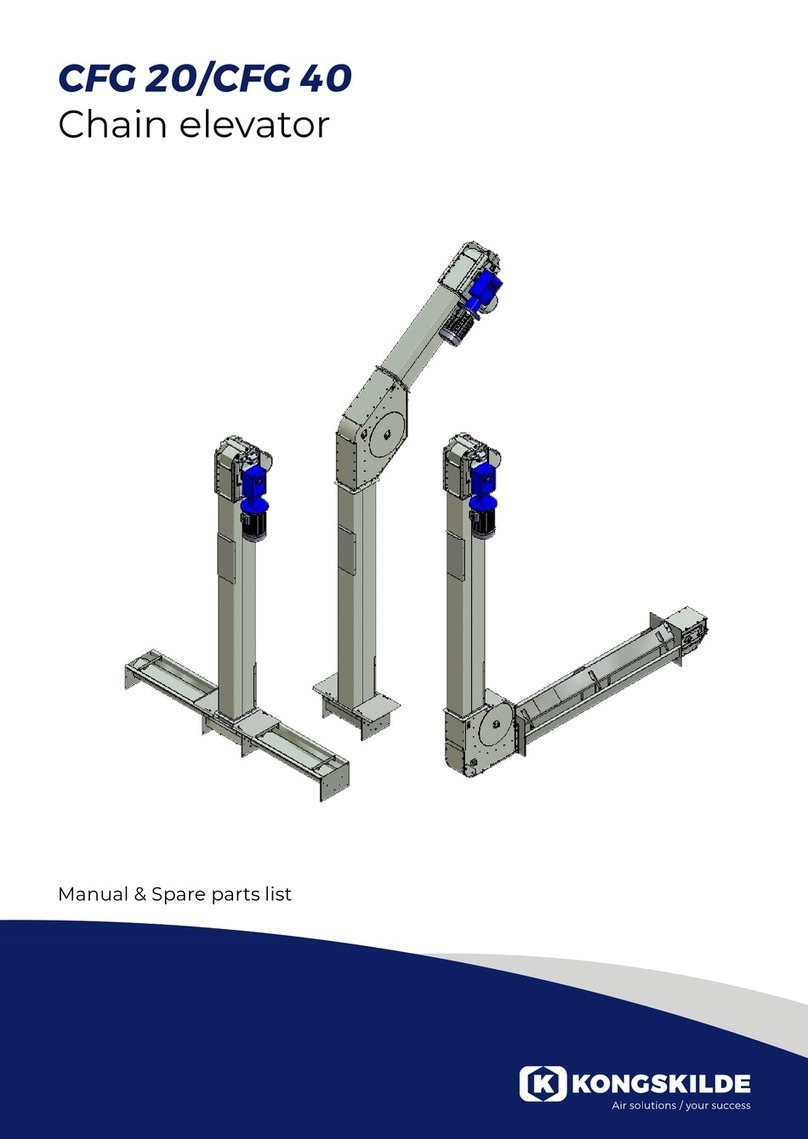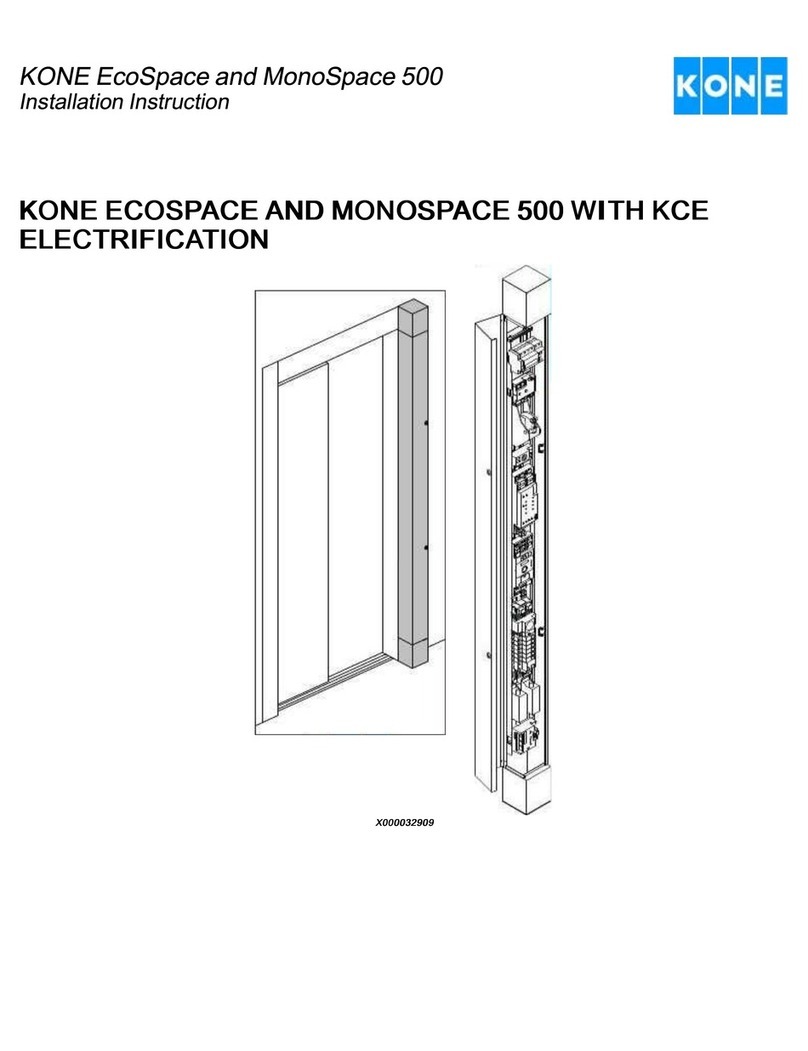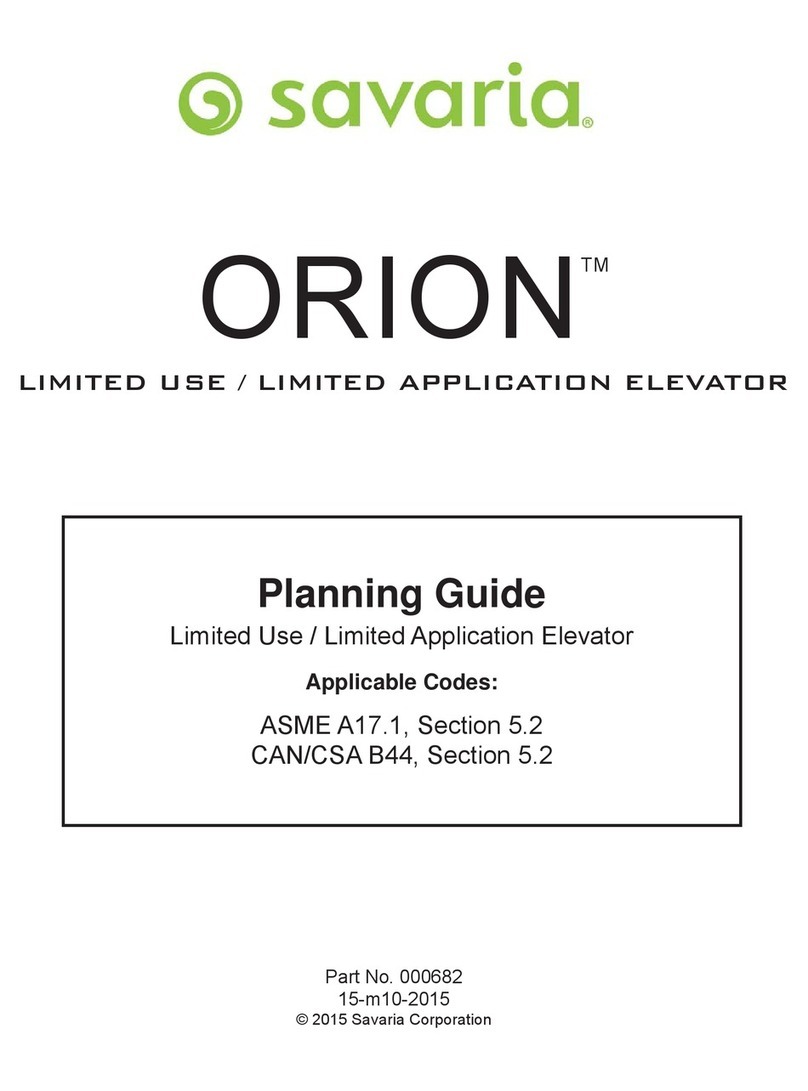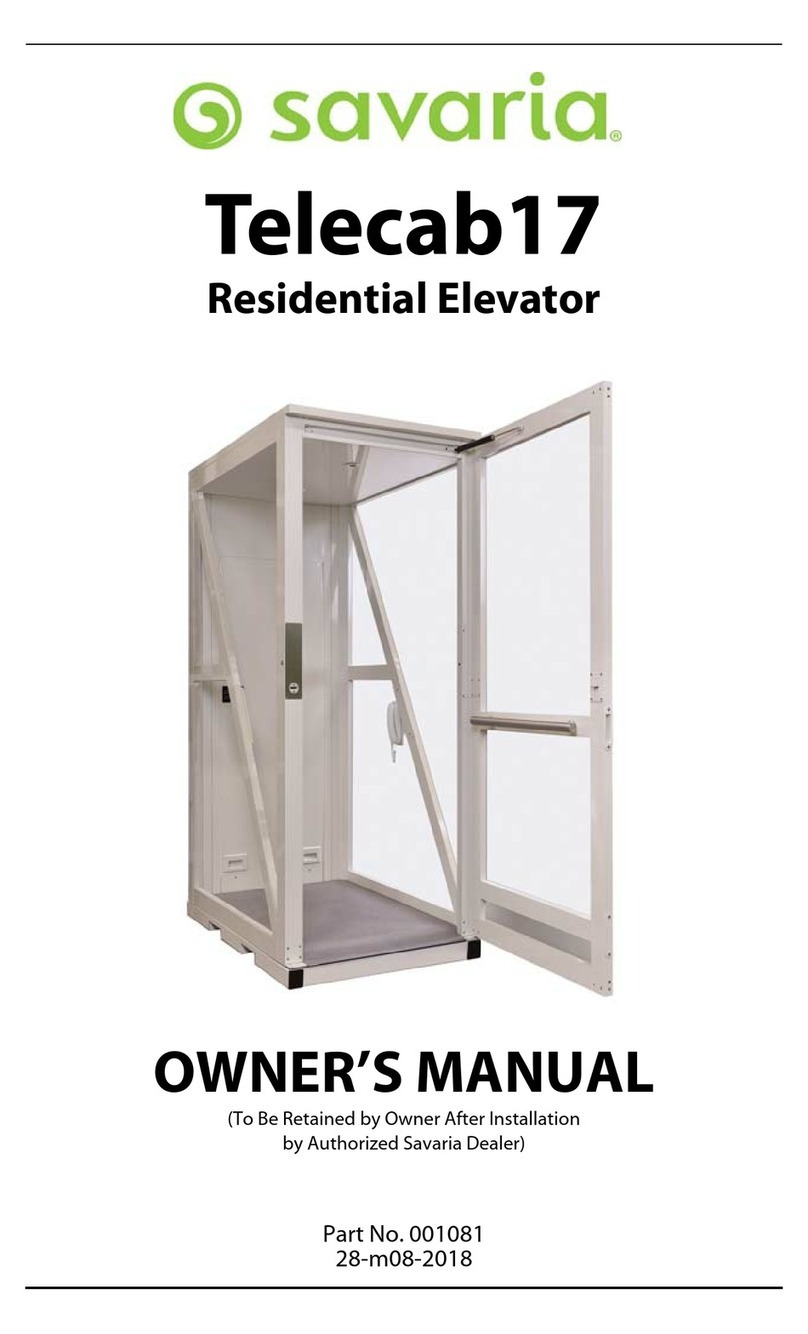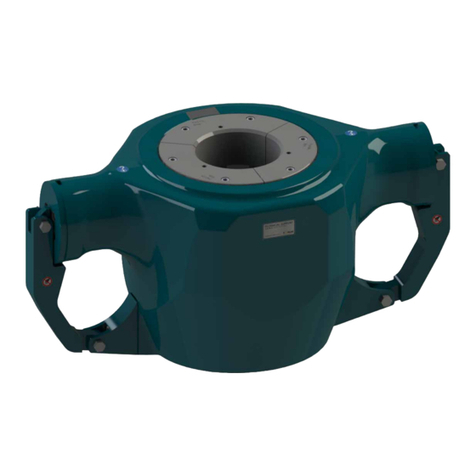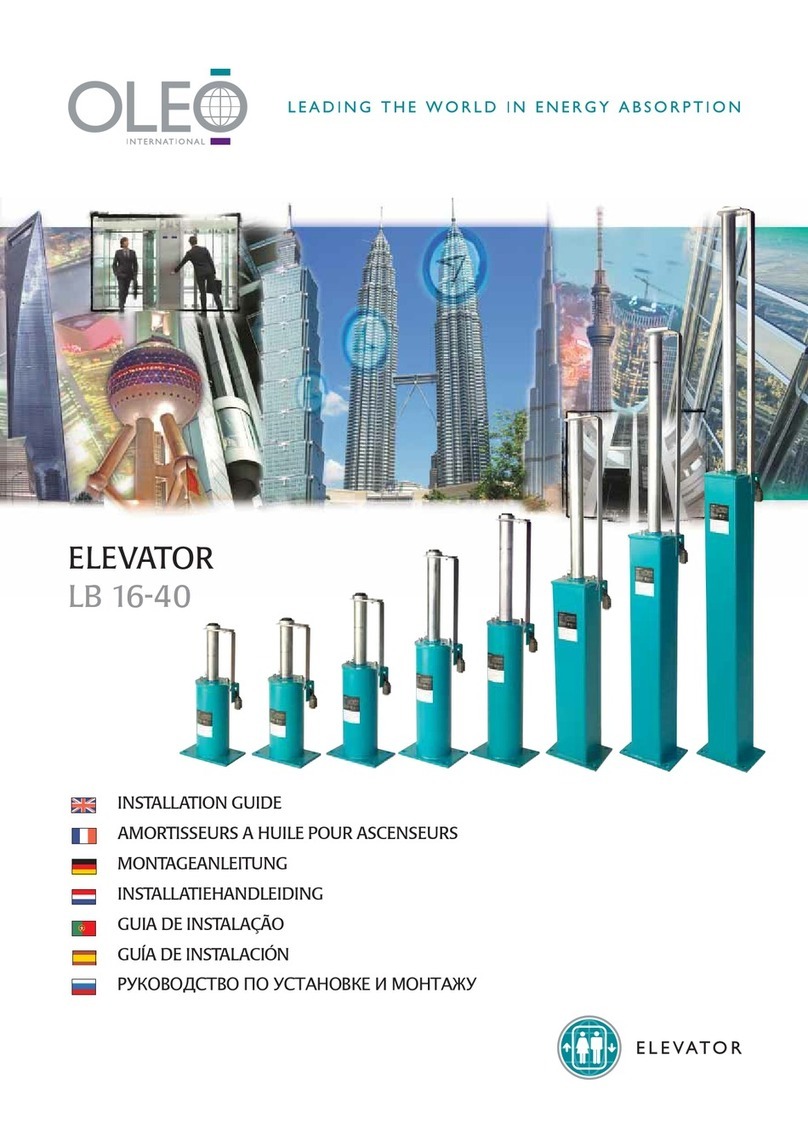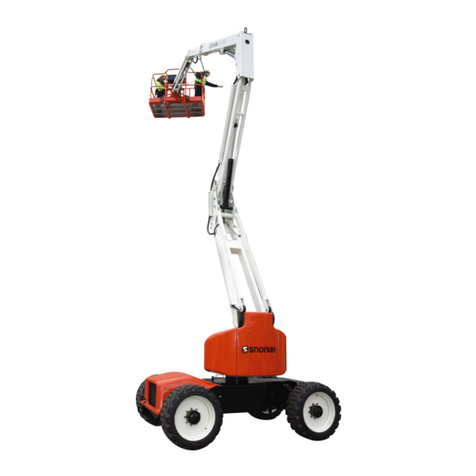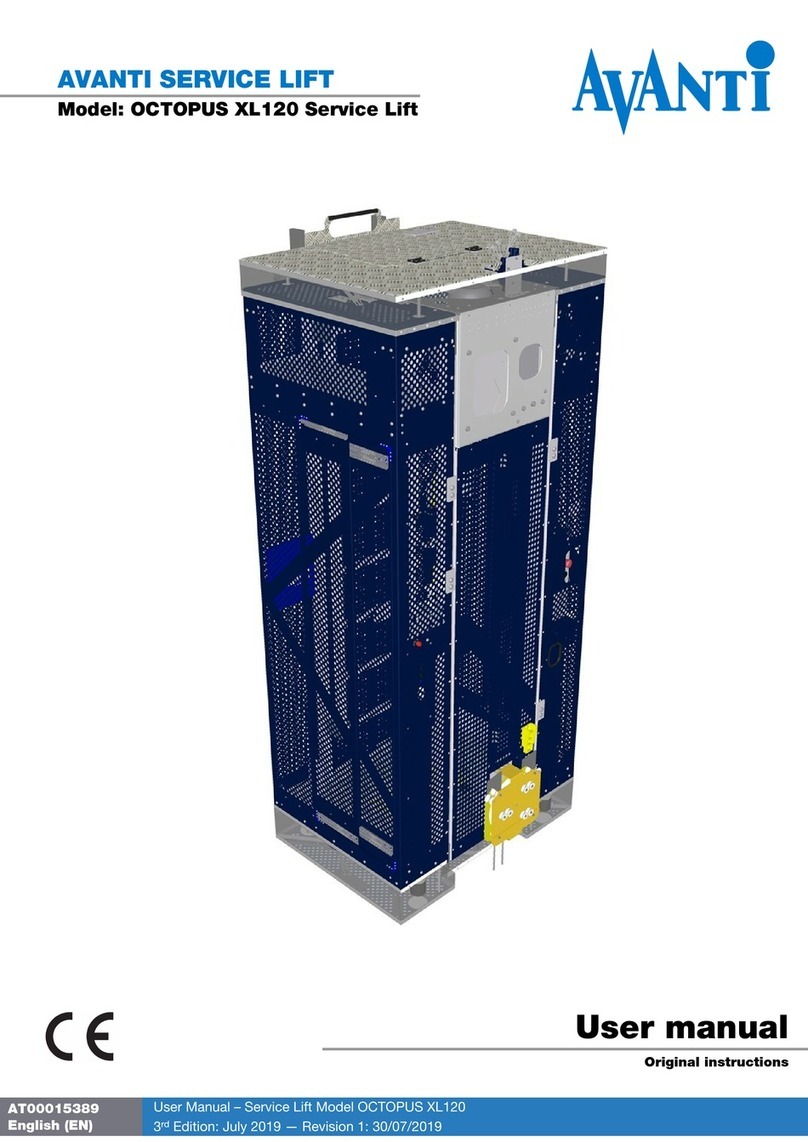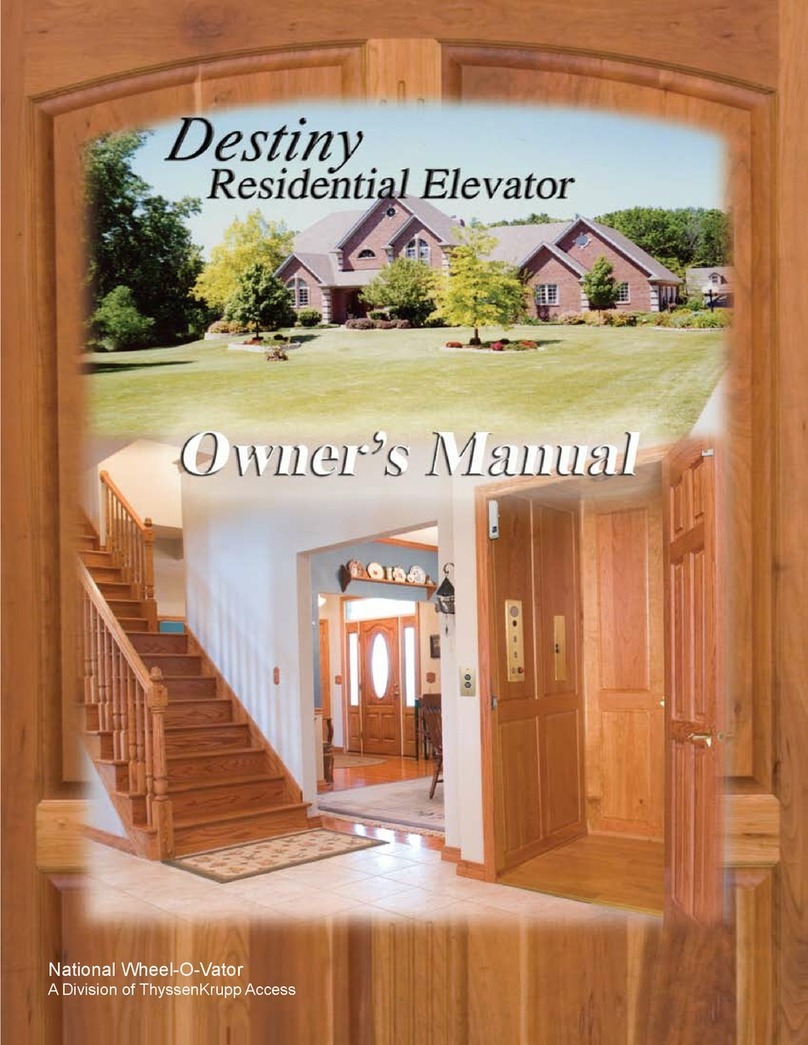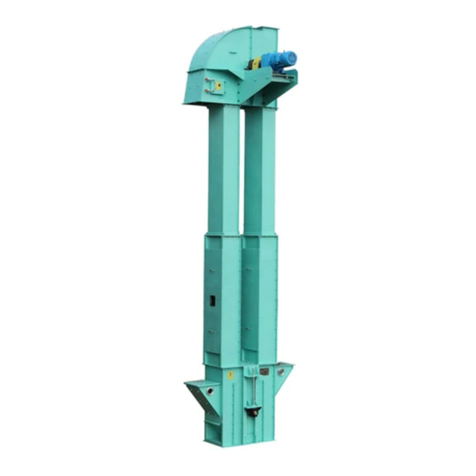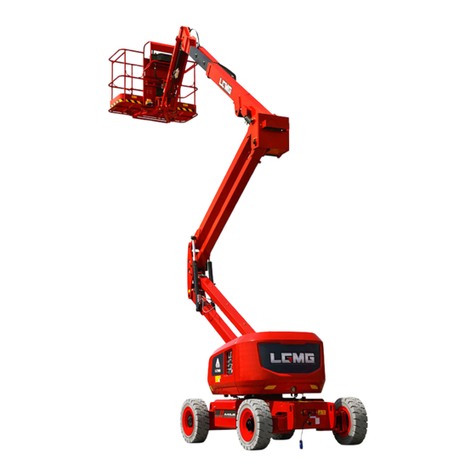
KONE Maintenance Method
MX10 / MX20 MCP Procedures - ASME A17.1-2013 / CSA B44-13
© 2014 KONE Corporation PSK8-604-MX10/MX20
All rights reserved. 9 (-) 2014-12-15
8.6.1.6.3: Controllers, Wiring, and Wiring Diagrams
(a)The interiors of controllers and their components shall be cleaned when necessary to
minimize the accumulation of foreign matter that can interfere with the operation of the
equipment.
(b)Temporary wiring and insulators or blocks in the armatures or poles of magnetically operated
switches, contactors, or relays on equipment in service are prohibited.
(c) When jumpers are used during maintenance, repair, or testing, all jumpers shall be removed
and the equipment tested prior to returning it to service. Jumpers shall not be stored in the
machine space, hoistway, or pit.
(d) Control and operating circuits and devices shall be maintained in compliance with applicable
Code requirements (see 8.6.1.1.2).
(e) Substitution of any wire or current-carrying device for the correct fuse or circuit breaker in an
elevator circuit shall not be permitted.
8.6.1.6.4 Painting: Care shall be used in the painting of the equipment to make certain that it
does not interfere with the proper functioning of any component. Painted components shall be
tested for proper operation upon completion of painting.
8.6.1.6.5 Fire Extinguishers: In jurisdictions not enforcing NBCC, Class “ABC” fire
extinguishers shall be provided in elevator electrical machine rooms, control rooms, and control
spaces outside the hoistway intended for full bodily entry, and walk-in machinery and control
rooms for escalators and moving walks; and they shall be located convenient to the access door.
8.6.1.6.6 Workmanship: Care should be taken during operations such as torquing, drilling,
cutting, and welding to ensure that no component of the assembly is damaged or weakened.
Rotating parts shall be properly aligned.
8.6.1.7: Periodic Tests
8.6.1.6.7: Signs and Data Plates: Required signs and data plates that are damaged or missing
shall be repaired or replaced.
8.6.1.7.2: Periodic Test Tags: A periodic test record for all periodic tests containing applicable
code requirement(s) and date(s) performed, and the name of the person or firm performing the
test, shall be installed so as to be readily visible and adjacent to, or securely attached to, the
controller for each unit. The test record shall be in the form of a metal tag or other format
designated by and acceptable to the authority having jurisdiction. If any of the alternative test
methods contained in 8.6.4.20 were performed the test tag must indicate alternative testing was
utilized for the applicable requirement.
8.6.1.7.3: No person shall at any time make any required safety device or electrical protective
device ineffective, except where necessary during tests. Such devices shall be restored to their
normal operating condition in conformity with the applicable requirements prior to returning the
equipment to service (see 2.26.7).
8.6.2: Repairs
8.6.2.1: Repair Parts. Repairs shall be made with parts of at least equivalent material, strength,
and design (see 8.6.3.1).
Note: It is very important to distinguish repair parts from replacement parts. Definitions of a repair
and a replacement follow:


